Dulce de leche is one of the most beloved sweet treats in Latin America and beyond. Its rich, caramelized flavor and smooth texture make it a versatile ingredient in desserts, beverages, and even some savory dishes. But what exactly is dulce de leche, and how does it differ from caramel or other similar confections?
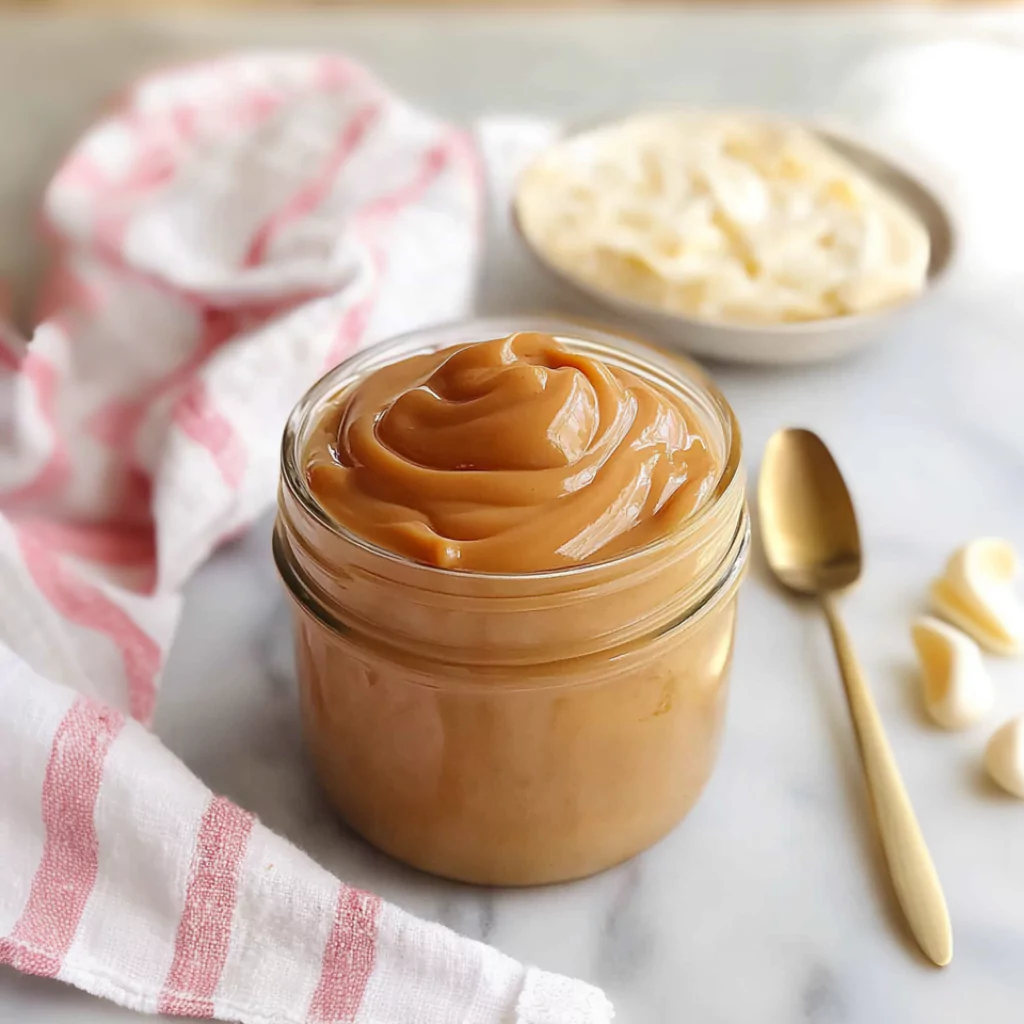
Dulce de leche translates to “sweet milk” in Spanish. It is made by slowly simmering milk and sugar until it thickens into a creamy, golden-brown spread. The process creates a deep, toasty flavor reminiscent of caramel, but unlike caramel (which is made by heating sugar alone), dulce de leche retains the creamy consistency of milk-based ingredients.
Many cultures have their own versions of caramelized milk-based confections. In Mexico, a similar treat called cajeta is made with goat’s milk, giving it a slightly tangy taste. In France, confiture de lait is a variation that often includes vanilla. The techniques and ingredients may vary slightly, but the core concept remains the same—milk and sugar transformed through slow cooking into something irresistibly sweet.
Dulce de leche is used in countless ways, from filling cakes and cookies to drizzling over pancakes and ice cream. It can even be stirred into coffee or cocktails for a rich, indulgent twist. No matter how you enjoy it, making it from scratch at home allows you to control the ingredients and achieve the perfect consistency and flavor.
Brief History and Cultural Significance
The origins of dulce de leche are widely debated, with Argentina and Uruguay both claiming it as their own. One popular legend states that it was discovered by accident in Argentina in the 19th century when a maid forgot a pot of milk and sugar on the stove. Upon returning, she found that the mixture had thickened into a sweet, caramelized sauce.
However, historical records suggest that dulce de leche existed long before this. Similar milk-based sweets were made in colonial Latin America, influenced by European and Middle Eastern cooking techniques. The Spanish brought milk and sugar to the New World, and over time, regional variations of caramelized milk developed.
In Argentina, dulce de leche is a national treasure. It is used in everything from alfajores (soft cookies filled with dulce de leche) to helado (ice cream). In Uruguay, it’s a staple in desserts like chajá, a sponge cake layered with dulce de leche, whipped cream, and meringue. In Brazil, doce de leite is a popular filling for brigadeiros and other pastries.
Dulce de leche has gained international recognition, with brands exporting it to markets worldwide. Despite its widespread popularity, homemade dulce de leche remains a favorite among those who appreciate the depth of flavor that comes from slow cooking.
Preparation Phase & Tools to Use
Prep Time, Cook Time, Cooling Time, and Yield
- Prep Time: Minimal—just gathering ingredients and tools
- Cook Time: 1.5 to 3 hours, depending on the method used
- Cooling Time: 30 minutes to 1 hour
- Yield: About 1.5 to 2 cups of dulce de leche
Essential Tools and Equipment
- Heavy-bottomed saucepan – Ensures even heat distribution and prevents burning
- Wooden spoon or silicone spatula – For continuous stirring to avoid scorching
- Thermometer – Helps monitor temperature for consistency
- Glass jars with lids – For storing the finished product
- Double boiler (optional) – Provides gentle heat for a slow-cooking method
Importance of Each Tool
Using the right equipment is essential to making perfect dulce de leche. A heavy-bottomed saucepan prevents the milk from scalding and ensures even cooking. Stirring with a wooden spoon or silicone spatula helps scrape the bottom to prevent burning. If you prefer precise control, a thermometer can help maintain the ideal temperature for slow caramelization. Glass jars are best for storage since they preserve freshness without altering the taste.
Preparation Tips
- Low and slow cooking is key—rushing the process can result in burning or a grainy texture.
- Constant stirring prevents sticking and ensures even caramelization.
- A pinch of baking soda helps keep the mixture smooth by breaking down proteins in the milk.
- Vanilla extract can be added at the end for extra depth of flavor.
Ingredients List
Traditional Dulce de Leche Recipe
- 4 cups whole milk
- 1 ½ cups granulated sugar
- ½ teaspoon baking soda
- 1 teaspoon vanilla extract (optional)
Alternative Methods & Ingredient Variations
Sweetened Condensed Milk Method:
- 1 can (14 oz) sweetened condensed milk
Vegan Dulce de Leche:
- 2 cups coconut milk or almond milk
- 1 cup coconut sugar or maple syrup
Step-by-Step Instructions
Stovetop Method (Traditional)
- In a heavy-bottomed saucepan, combine milk and sugar over medium heat. Stir constantly until the sugar dissolves.
- Once the mixture is warm, add the baking soda and reduce the heat to low. This helps prevent curdling.
- Stir occasionally to prevent the milk from sticking to the bottom of the pan. As it thickens, increase stirring frequency.
- Simmer for 1.5 to 2 hours until the mixture turns a deep caramel color.
- Remove from heat and stir in vanilla extract if desired.
- Let cool before transferring to a glass jar. Store in the refrigerator.
Condensed Milk Method (Easiest Way)
- Place an unopened can of sweetened condensed milk in a large pot.
- Cover completely with water and bring to a gentle boil.
- Simmer for 2 to 3 hours, ensuring the can stays submerged.
- Remove and let it cool before opening. The result is thick, golden dulce de leche.
Baking Method (Oven)
- Preheat oven to 425°F (220°C).
- Pour sweetened condensed milk into a baking dish. Cover with foil.
- Place the dish in a larger pan filled with hot water (for even heating).
- Bake for 1.5 to 2 hours, checking occasionally and stirring if needed.
- Once golden brown, remove and cool before storing.
Instant Pot / Pressure Cooker Method
- Place an unopened can of sweetened condensed milk in the pressure cooker.
- Add enough water to cover the can by at least an inch.
- Cook on high pressure for 40 minutes.
- Allow natural pressure release, then remove and cool before opening.
Vegan Dulce de Leche (Coconut or Almond Milk)
- Combine coconut milk and coconut sugar in a saucepan.
- Simmer over low heat, stirring frequently.
- Cook for 30 to 40 minutes until thick and golden.
- Add a pinch of salt and vanilla extract for flavor.
Dulce de leche is a simple yet rewarding recipe that requires patience. Whether using traditional stovetop methods or quick alternatives like condensed milk, the end result is a rich, creamy spread that enhances everything it touches.
Best Ways to Use Dulce de Leche
Dulce de leche is one of the most versatile sweet spreads, adding a rich caramelized depth to various dishes. Whether used as a filling, topping, or ingredient in baked goods, its creamy consistency makes it a perfect addition to countless recipes.
Classic Pairings
Alfajores (Argentinian Sandwich Cookies)
These soft, crumbly cookies are traditionally filled with a thick layer of dulce de leche and rolled in shredded coconut or coated in chocolate. The combination of buttery cookies and the sweet, creamy filling makes alfajores a staple in Latin American bakeries.
Churros with Dulce de Leche Filling
Crispy, deep-fried dough coated in cinnamon sugar is already delicious, but filling them with dulce de leche takes them to the next level. The contrast between the crunchy exterior and the smooth, sweet filling creates an indulgent treat.
Flan with Dulce de Leche Topping
A traditional custard dessert, flan pairs perfectly with dulce de leche. Instead of caramel sauce, a drizzle of warm dulce de leche over the top adds a richer, milkier sweetness to the silky custard.
Pancakes & Waffles
Dulce de leche makes a fantastic substitute for syrup. Spread a generous layer over pancakes or waffles and top with bananas, nuts, or whipped cream for a decadent breakfast.
Ice Cream Swirl
Instead of using regular caramel sauce, swirl dulce de leche into vanilla or chocolate ice cream. The result is a creamy, caramel-infused dessert that balances sweetness with a deep, toasty flavor.
Dulce de Leche Cheesecake
Dulce de leche can be blended into cheesecake batter or used as a topping for a rich, creamy twist on a classic dessert. It adds depth and a slight caramelized note that pairs well with tangy cream cheese.
Beverages Featuring Dulce de Leche
Dulce de Leche Coffee & Lattes
Instead of sugar, stir a spoonful of dulce de leche into your morning coffee or latte. It melts into the hot liquid, creating a sweet, caramel-infused drink with a creamy consistency.
Milkshakes & Smoothies
Blending dulce de leche with milk and ice cream creates a thick, indulgent milkshake. It can also be added to banana or chocolate smoothies for an extra layer of sweetness.
Dulce de Leche Hot Chocolate
Adding dulce de leche to hot chocolate enhances its richness, creating a creamy, caramel-flavored drink. A pinch of sea salt balances the sweetness, making it even more satisfying.
Cocktails with Dulce de Leche
For a boozy twist, dulce de leche can be mixed into cocktails like White Russians, espresso martinis, or even spiked milk punches. Its creamy texture helps create smooth, dessert-like drinks.
Savory Pairings and Unique Uses
Dulce de Leche Glazed Meat
In some Latin American dishes, dulce de leche is used as a glaze for meats like pork or chicken. The combination of sweetness and caramelization adds depth to slow-roasted or grilled meats.
Cheese Pairings
Dulce de leche pairs exceptionally well with cheeses like brie, gouda, or aged cheddar. The contrast between sweet and salty creates a balanced flavor profile that works as a spread for crackers or bread.
Nutritional Information & Health Benefits
Dulce de leche is undeniably delicious, but it is also high in sugar and calories. Understanding its nutritional content can help you incorporate it into a balanced diet.
Macronutrients and Calories
Dulce de leche primarily consists of sugar and dairy, making it an energy-dense food. A single tablespoon typically contains:
- Calories: Around 60–90
- Carbohydrates: 12–15g (mostly from sugar)
- Fats: 1–2g
- Proteins: 1–2g
Comparing Homemade vs. Store-Bought
Homemade dulce de leche allows you to control the ingredients and avoid artificial additives found in some store-bought versions. Many commercial brands contain preservatives, added flavors, or high-fructose corn syrup.
Healthier Alternatives
- Using Coconut Sugar or Honey: Lowers glycemic impact
- Vegan Versions with Coconut Milk: Reduces saturated fat and dairy content
- Adding Nuts or Fiber-Rich Toppings: Slows sugar absorption and improves satiety
Common Mistakes to Avoid & How to Perfect Your Recipe
Even though making dulce de leche is straightforward, several common mistakes can affect its texture and flavor.
Burning the Mixture
One of the biggest challenges in making dulce de leche is preventing it from burning. Since sugar caramelizes at high temperatures, even a slight increase in heat can lead to a burnt, bitter taste.
How to Avoid:
- Always use low to medium-low heat.
- Stir frequently, especially as the mixture thickens.
- Use a heavy-bottomed pan for even heat distribution.
Grainy or Gritty Texture
If the mixture crystallizes, it can become grainy instead of smooth.
How to Avoid:
- Adding a pinch of baking soda helps break down milk proteins, preventing crystallization.
- Stir continuously to ensure even cooking.
- Strain the mixture through a fine sieve if necessary.
Too Thin or Too Thick
The consistency of dulce de leche depends on the cooking time. Overcooking can make it too thick, while undercooking results in a runny sauce.
How to Adjust:
- If too thick, add a small amount of warm milk and stir to loosen it.
- If too thin, return to heat and simmer longer, stirring constantly.
Improper Storage
Dulce de leche can harden or develop sugar crystals if not stored correctly.
Storage Tips:
- Keep it in an airtight jar in the refrigerator for up to 3 weeks.
- For longer storage, freeze in small portions and thaw as needed.
Pro Tips, Storing & Reheating Dulce de Leche
Dulce de leche is best enjoyed when it has the right texture and consistency. Knowing how to store, reheat, and repurpose it ensures you get the most out of every batch.
How to Store Dulce de Leche
Room Temperature Storage
If you’ve made dulce de leche using the sweetened condensed milk method and haven’t opened the can, you can store it at room temperature for up to 3 months. However, once opened, it must be refrigerated.
Refrigeration
Homemade dulce de leche should be stored in an airtight container in the refrigerator. This prevents it from drying out and helps maintain its smooth texture. Properly stored, it can last up to 3 weeks.
Freezing for Long-Term Storage
Dulce de leche freezes well and can be stored for up to 3 months without losing its texture or flavor. To freeze:
- Portion it into small airtight containers or ice cube trays.
- Thaw it in the refrigerator overnight before use.
Reheating and Softening Methods
Dulce de leche thickens when refrigerated. To restore its smooth, spreadable consistency, try these reheating methods:
1. Microwave Method
- Transfer the desired amount into a microwave-safe bowl.
- Heat in 10-second intervals, stirring in between.
- Stop once it reaches the desired consistency.
2. Stovetop Double Boiler Method
- Place dulce de leche in a heatproof bowl over a pot of simmering water.
- Stir occasionally until softened.
3. Warm Water Bath Method
- Place a jar of dulce de leche in a bowl of warm (not boiling) water.
- Let it sit for 5–10 minutes, stirring occasionally.
Creative Uses for Dulce de Leche
Beyond traditional uses, dulce de leche can be incorporated into a variety of dishes, adding depth and richness.
Dulce de Leche Frosting for Cakes and Cupcakes
Mix dulce de leche into buttercream or whipped cream for a rich, caramel-flavored frosting. It pairs beautifully with chocolate, vanilla, or spice cakes.
Dulce de Leche Drizzle for Pastries
Warm dulce de leche can be drizzled over:
- Croissants
- Doughnuts
- Muffins
- Cinnamon rolls
Filling for Crepes and Empanadas
Dulce de leche makes an excellent filling for thin crepes or baked pastries. It pairs well with bananas, strawberries, or nuts.
Dulce de Leche Swirl for Brownies and Blondies
Swirl dulce de leche into brownie or blondie batter before baking for a caramelized, gooey texture.
Dulce de Leche Yogurt and Oatmeal Topping
For a healthier twist, mix a spoonful into Greek yogurt, overnight oats, or smoothie bowls. It adds natural sweetness without needing refined sugar.
FAQs About Dulce de Leche
1. Can I Make Dulce de Leche Without Sugar?
Yes, but the flavor and texture will be different. Using natural sweeteners like honey or maple syrup can work, but the consistency may be slightly thinner.
2. Is Dulce de Leche the Same as Caramel?
No. Caramel is made by heating sugar alone, while dulce de leche is made by slowly cooking milk and sugar together, giving it a creamier, milkier taste.
3. Can I Use Evaporated Milk Instead of Condensed Milk?
Not directly. Evaporated milk lacks sugar, so you would need to add a sweetener and cook longer to achieve the same consistency.
4. What’s the Best Way to Thin Out Thickened Dulce de Leche?
Gently heat it and stir in a small amount of warm milk or cream until it reaches the desired consistency.
5. Can You Overcook Dulce de Leche?
Yes. Overcooking can make it too thick, grainy, or even burnt. Keep an eye on the color and texture to avoid this.
Conclusion
Dulce de leche is a timeless treat that enhances both sweet and savory dishes. Whether used as a spread, filling, or topping, its rich, caramelized flavor makes it a favorite across cultures. By following proper storage and reheating techniques, you can enjoy its delicious taste anytime.
Print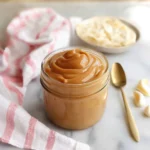
Dulce de Leche
- Total Time: 2 hours
- Yield: 2 cups 1x
- Diet: Vegetarian
Description
This homemade dulce de leche recipe is easy to make and results in a creamy, caramelized spread perfect for desserts, coffee, or drizzling over ice cream. With just a few ingredients and some patience, you’ll have a rich and indulgent treat!
Ingredients
Traditional Dulce de Leche Recipe
- 4 cups whole milk
- 1 ½ cups granulated sugar
- ½ teaspoon baking soda
- 1 teaspoon vanilla extract (optional)
Alternative Method (Sweetened Condensed Milk)
- 1 can (14 oz) sweetened condensed milk
Vegan Dulce de Leche
- 2 cups coconut milk or almond milk
- 1 cup coconut sugar or maple syrup
Instructions
Traditional Stovetop Method
- In a heavy-bottomed saucepan, combine the milk and sugar over medium heat, stirring frequently until the sugar dissolves.
- Once warm, add the baking soda, reduce heat to low, and continue stirring to prevent clumping.
- Simmer the mixture for 1.5 to 2 hours, stirring frequently as it thickens and turns a deep golden brown.
- Once thickened to the desired consistency, remove from heat and stir in vanilla extract (if using).
- Let cool before transferring to an airtight jar for storage.
Condensed Milk Method (Easiest Way)
- Place an unopened can of sweetened condensed milk in a large pot, fully submerged in water.
- Bring the water to a gentle boil, then simmer for 2 to 3 hours, ensuring the can stays underwater.
- Carefully remove, let cool completely before opening. The result is a smooth, rich dulce de leche.
Oven Method
- Preheat oven to 425°F (220°C).
- Pour sweetened condensed milk into a baking dish and cover with foil.
- Place the dish inside a larger pan filled with hot water (water bath method).
- Bake for 1.5 to 2 hours, stirring occasionally, until deep golden brown.
- Remove and let cool before storing.
Instant Pot / Pressure Cooker Method
- Place an unopened can of sweetened condensed milk in the pressure cooker.
- Add enough water to cover the can by at least 1 inch.
- Cook on high pressure for 40 minutes.
- Allow natural pressure release, then remove and cool before opening.
Vegan Dulce de Leche (Coconut or Almond Milk)
- In a saucepan, combine coconut milk and coconut sugar over medium heat.
- Stir frequently and simmer for 30 to 40 minutes until thick and caramelized.
- Add a pinch of salt and vanilla extract for enhanced flavor.
Notes
- Stir constantly to prevent burning.
- Using a heavy-bottomed pan ensures even heat distribution.
- Store in an airtight jar for up to 3 weeks in the fridge or freeze for up to 3 months.
- Prep Time: 5 minutes
- Cook Time: 1.5–2 hours
- Category: Dessert
- Method: Stovetop
- Cuisine: Latin American
Nutrition
- Calories: 60
- Sugar: 12g
- Sodium: 10mg
- Fat: 1g
- Saturated Fat: 0.5g
- Carbohydrates: 14g
- Fiber: 0g
- Protein: 1g
- Cholesterol: 5mg

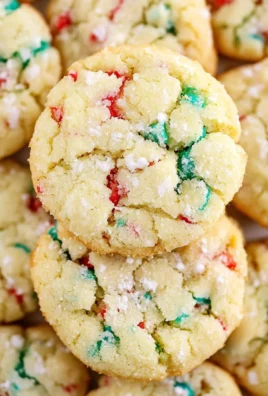
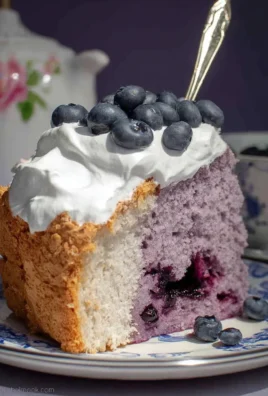
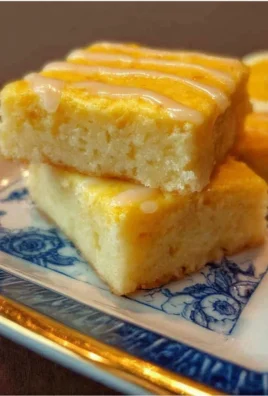
Leave a Comment